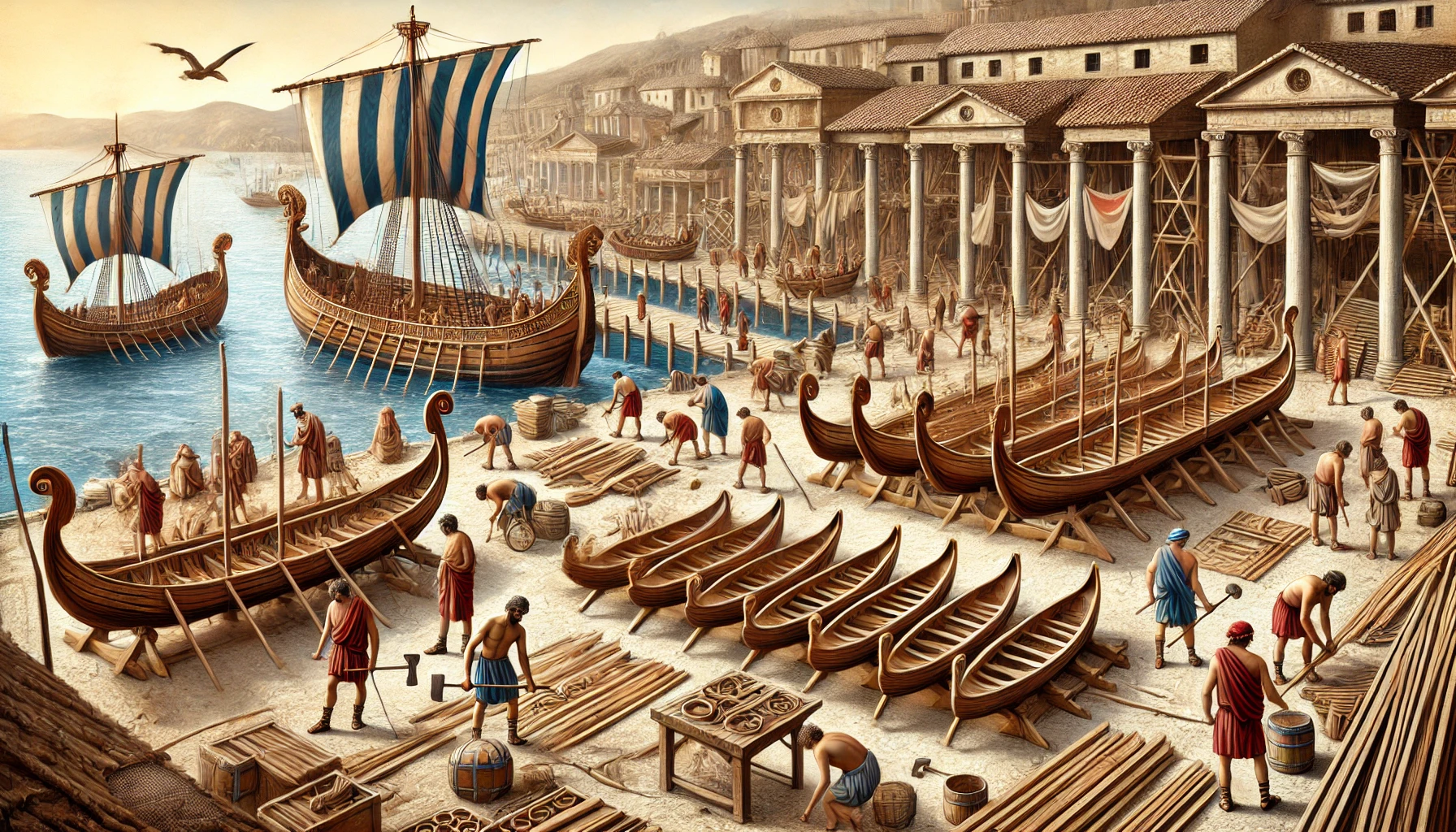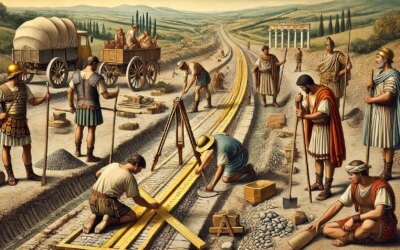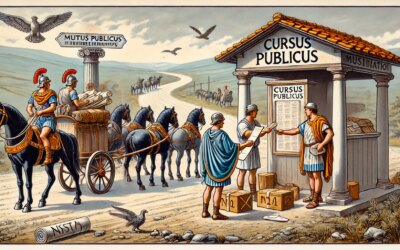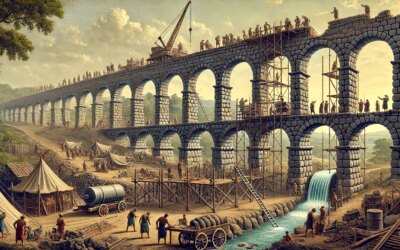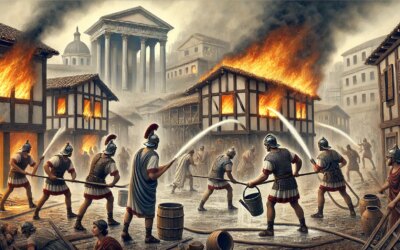Forging the Empire’s Fleet
On a bustling Roman coastline, the air crackles with the sound of hammering, sawing, and shouted orders. Massive wooden ribs rise like skeletons from the earth, destined to become war galleys or merchant ships. Ropes stretch taut across scaffolding. Workmen carry timbers and tar pots as the scent of resin and sea salt mingles in the breeze. This is a Roman shipyard in the 1st century AD—a powerhouse of craftsmanship and strategic innovation that kept the empire connected and secure.
The Strategic Importance of Shipbuilding
Rome’s dominance over the Mediterranean—dubbed Mare Nostrum (“Our Sea”)—was not only due to its legions but also its vast and versatile navy. In the 1st century AD, shipbuilding reached new heights, serving both the Classis Romana (Roman Navy) and the merchant fleets that ferried grain, goods, and people across three continents.
From naval bases like Portus and Ravenna to provincial yards in Alexandria, Carthage, and Piraeus, Rome maintained a network of shipyards that underpinned imperial expansion and economic integration.
How Roman Ships Were Built
Roman shipbuilding combined Greek design principles with Roman engineering efficiency. The process involved several key stages:
- Design and planning – Based on purpose (war, trade, transport), shipwrights selected proportions, hull shapes, and sail types
- Keel laying – A central beam laid as the ship’s spine
- Framing – Wooden ribs shaped and attached to the keel to form the hull’s skeleton
- Planking – Hull planks fastened using mortise-and-tenon joints, caulked with pitch and fiber
- Decking and outfitting – Masts, rigging, rudders, and interior features like oar benches, storage holds, and ballast added
Most materials came from Italy or the provinces—oak, pine, and cedar were common. Iron nails, bronze fastenings, and tar were produced locally or imported as needed.
Workforce and Workshop Layout
Shipyards employed a range of specialists:
- Navicularii – Master shipwrights overseeing construction
- Carpentarii – Skilled woodworkers responsible for shaping and fitting timbers
- Calafates – Caulkers sealing joints and waterproofing hulls
- Ropemakers and sailmakers – Working in adjacent yards to provide critical components
Laborers and slaves hauled materials and manned bellows for heating pitch. Workshops were typically located near harbors or rivers for easy launching, with slipways and dry docks in some of the larger yards.
Types of Roman Ships
Roman shipyards built a variety of vessels to meet the empire’s diverse needs:
- Warships (liburnae, triremes, quinqueremes) – Lightweight, fast, equipped with rams and manned by rowers
- Merchant ships (corbitae, navis oneraria) – Broad, deep-hulled, reliant on sails and capable of carrying tons of cargo
- Transport ships (navis lusoria) – Designed for troops, horses, and equipment
Designs evolved over time, influenced by Greek, Phoenician, and even Egyptian models, but adapted for Rome’s scale and ambition.
Portus: The Hub of Roman Maritime Trade
By the mid-1st century AD, Portus, the new artificial harbor of Rome built under Claudius and expanded by Trajan, became the empire’s principal maritime gateway. It featured:
- Shipbuilding facilities and repair docks
- Massive warehouses (horrea) for grain and goods
- Canals connecting to the Tiber River and Ostia
Portus represented the height of Roman engineering and allowed year-round docking, sheltering Rome from the seasonal limitations of older ports like Ostia.
Supporting the Roman Navy
The Roman Navy maintained permanent fleets across the empire—Classis Britannica, Classis Germanica, Classis Alexandrina—each supported by local shipyards. Ships were constructed, refitted, and repaired regularly, especially after major campaigns or naval disasters.
Strategic naval bases often had integrated administrative centers, training grounds, and barracks, further emphasizing the fusion of logistics and military might.
Shipbuilding and Roman Economy
Beyond warfare, shipbuilding was a vital economic engine. It stimulated demand for:
- Lumber and metal
- Textiles (sails)
- Tar and rope
- Skilled labor and artisan training
The navicularii who owned and managed shipyards and fleets often became wealthy and influential, sometimes receiving imperial contracts and honors for their services.
Innovation and Legacy
Rome introduced several innovations in shipbuilding, including the corvus boarding bridge, efficient modular ship repair systems, and scalable naval logistics. These advancements allowed Rome to recover from naval losses, maintain trade networks, and project power across vast distances.
Even today, modern shipyards echo many of the organizational principles pioneered by the Romans—division of labor, supply chain integration, and purpose-built dry docks.
Crafting the Arteries of Empire
In every plank and keel laid in the shipyards of Rome, a path was opened—to conquest, commerce, or diplomacy. These ships carried legions to battle, grain to the hungry, and envoys to far-flung courts. They were the vessels of Roman destiny—forged not only in ambition, but in oak, iron, and tar.

